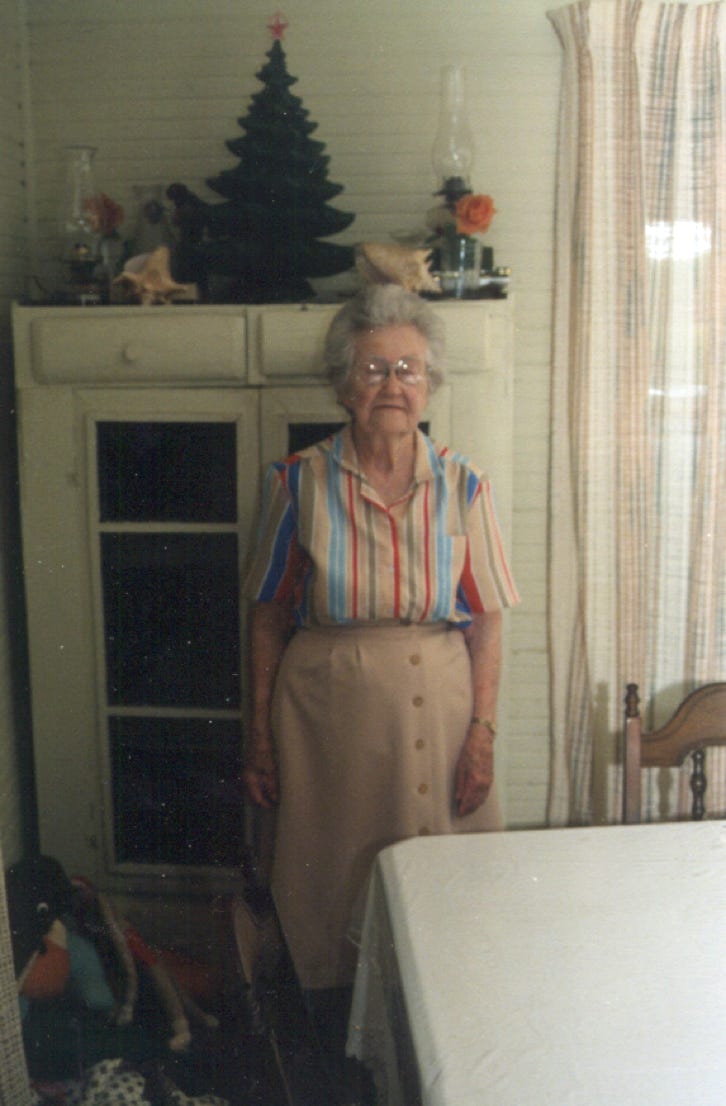Look! I Found A Big One
The Suwannee River Sawmill Company

The story of the sawmill was passed on to me several years ago by Johnnie Jones, my first cousin once removed. Johnnie and his sisters, Ora, and Alice, lived together in Mayo, their spouses having passed away long ago. Ora, the eldest of the three was born in 1905, followed by Johnnie in 1906, and Alice in 1912 (Sadly, Ora and Johnnie have now passed away, and I am unsure of Alice). The three, because of their age, and having lived most of their lives in and around Lafayette County, had many fascinating stories to tell of our ancestors and were pleased to share them with me.
Johnnie wasn’t aware of how the sawmill came into existence so that part of the story comes from my rummaging through a storage trunk containing records placed there by my great grandparents, Sam and Caroline, many years ago, as well as hours of research examining the many records carefully preserved in the Lafayette County courthouse.
With the four of us sitting in Johnnie’s living room, Johnnie began telling us the story of the sawmill. When he was about six, his Uncle Jimmy Jones usually docked his barge at the country store that his Grandpa Allen Jones had owned years befor. The store was perched on the upper bank of the Suwannee River in Hatch Bend, and was a typical cypress plank building supported by cypress stumps, with a long stairway leading from the front porch down to the river landing.
Johnnie almost every day walked down the dirt road from his home in Hatch Bend to the store to watch his Uncle Jimmy dock his barge at the river landing. Once docked, Jimmy and Johnnie would enter the store where Johnnie picked out his sucker for the day. Then, together they would return to the barge and motor up the river to the Sawmill that was located near the deserted town of New Troy, the long ago county seat of Lafayette County. Once the barge docked, Johnnie and Uncle Jimmy went ashore to meet their many relatives working at the sawmill (my grandparents were among those relatives). Johnnie said that my great grandfather Sam operated the mill while Jimmy navigated the river working his barge.
From my research, I found that Standard Lumber Company, one of the largest sawmills in the southeast at that time, owned a sawmill in Alton, several miles up river from the sawmill. Pine tree logs from the company-owned forest in upper Suwannee and Lafayette Counties were harvested daily, then rolled into the river, and floated to the Standard Lumber Company sawmill. However, while on their journey down river, many of the logs would float past the Alton sawmill and would eventually sink to the bottom.
Johnnie told us that Jimmy would motor up the river each day dragging the bottom for the sunken logs. A crane attached to the front of his barge (usually operated by Grandfather Laurie Severance) would lower a chain with a large hook on the end into the river to snag a log, and then raise it to the barge’s deck. The log was then hooked to one end of another chain that was wrapped around a large wheel located on top of the bank, while the other end of the chain (the one wrapped around the wheel), was hooked to the harness of a mule on shore. The mule was then made to walk along the bank, causing the wheel to turn, which then would pull the log up to the top of the bank. Other mules would then drag the logs to the sawmill where they were ripped for pine siding to be used for the buildings in the county.
As sunken logs were becoming scarce in that part of the county (Johnnie didn’t know why), their sawmill business began to decline. Uncle Jimmy, now unable to make a decent living, was forced to move the sawmill operation to another property that he owned in Gilchrist County where timber was much more plentiful. Jimmy said that great grandfather Sam, deciding not to relocate, returned to the homestead, and along with his children, cultivated the land until his death in 1937.
When Johnnie completed his story of the sawmill operation, Ora started telling a story about the day “Uncle Laurie” pulled up a safe - chest with the same crane used to salvage logs. At the time, I had absolutely no idea of what a safe-chest might be, so Ora began by defining a safe-chest as an upright chest used to store dishes and kitchenware.
Ora told us that while dragging the river for logs with Jimmy one day, her uncle Laurie snagged what he thought was a log and when the “log” reached the surface, he found the safe-chest on the end of the hook. The chest, made of red cedar, had been placed in the river years before, but was unharmed by the water so Laurie decided to keep the chest and that evening placed it in her aunt Ethel's kitchen where it remained until her death in 1924. Given the chest after her aunt Ethel's death, Ora placed it in her kitchen where it stands today.
Local area historians (my great-uncles were among them) tell the story that when the town of New Troy was raided by Union Soldiers at the end of the Civil War, the townspeople threw their furniture and belongings into the River to keep the “Yankees” from making use of it. This chest was one of the many pieces of furniture and other personal items that ended up in the river. More information about the raids and these items ending up on the bottom of the river can be found in the story of the "One-Legged Man.”
Several days after our conversation about the river barge, Ora and I drove out to her farm in Branford, to show me the safe-chest, and to allow me to photograph it.
